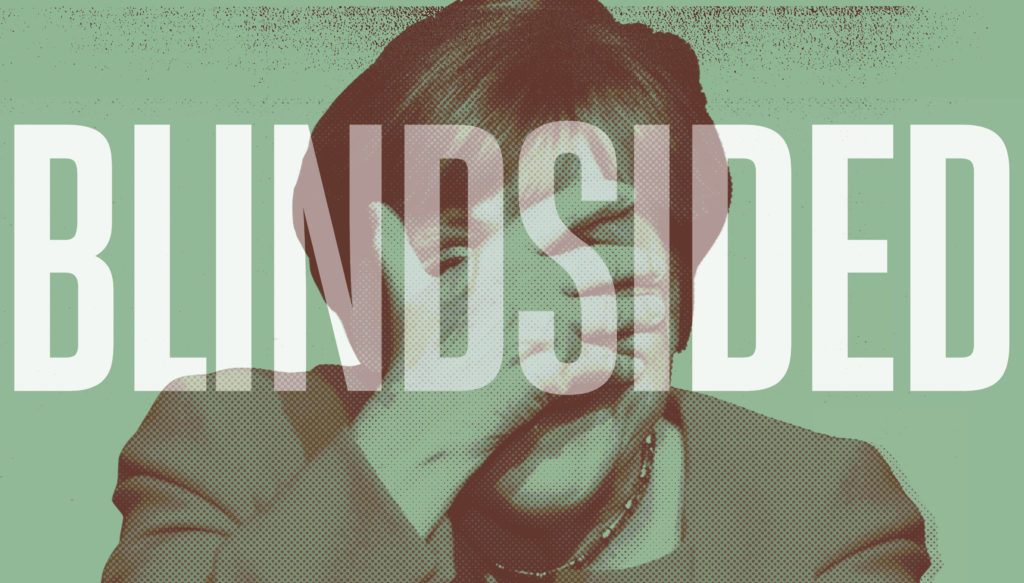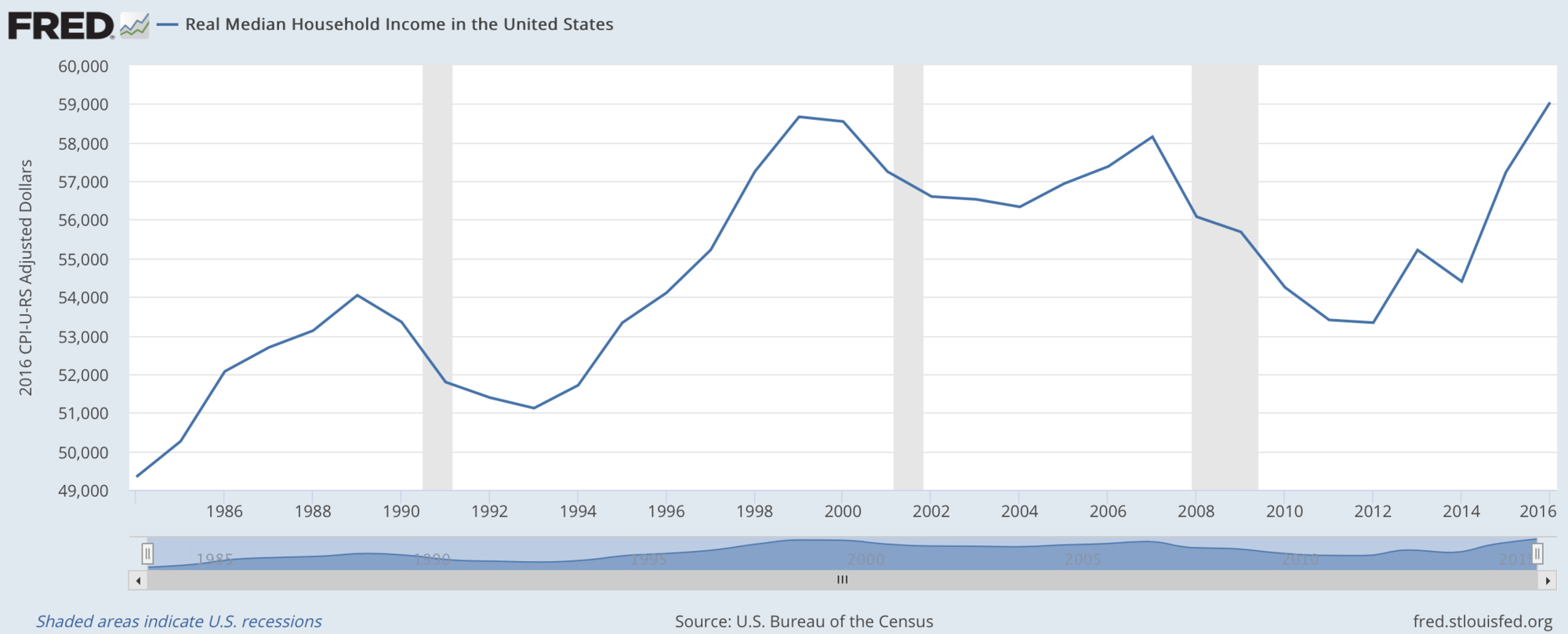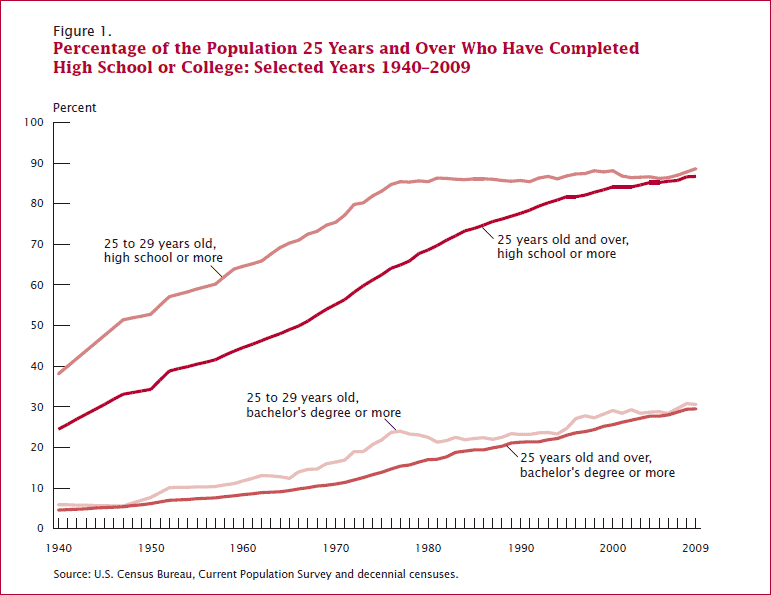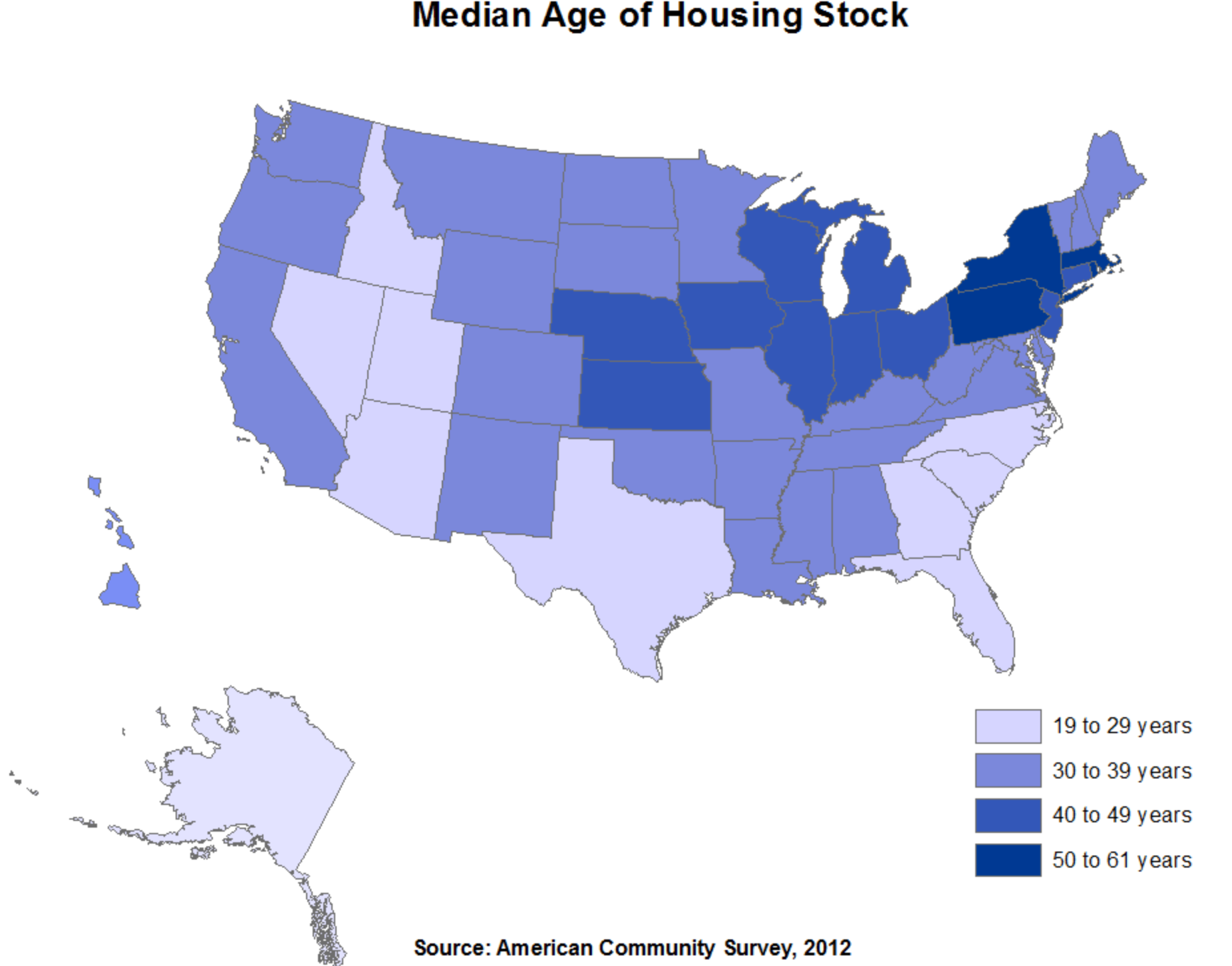
“We never saw it coming.”
How often have we heard that over the past decade from those self-anointed experts who, from economics to politics and beyond, have assured us their elite educations and mastery of data enabled them to skilfully manage our political economy? Their failure to foresee and prevent the largest financial collapse of the last century would be damning enough but their continued failure to either anticipate or understand the popular decisions that are ripping the West apart, and with it the world, is more damning still. How can people so well-trained and so well-equipped be so consistently wrong?
The problem is not that they don’t how to think; it’s that they are thinking about the wrong things.
Too often they have failed to consider the manner in which low probability but high impact events arise from a confluence of circumstances.
Too often they have looked at the median or the average and ignored the tails of our circumstances, ignoring that the tails move human history.
Too often they have viewed humans as mere material beings who look only after the well-being of their bellies. The populist rebellions show us what the ancients always understood, that people are, in the end, primarily concerned with their souls.
Hope and dignity are the most important aspects of the soul that ought to concern us in this populist moment. Over a century of experience with mass, democratic governments provide us with a wealth of evidence that people seek radical political change only when they lose hope that they can live comfortable and dignified lives of their own choosing. If populisms of left and right are truly radical, as many fear them to be, then they must result from a dramatic loss of hope and belief among many whom we call our fellow citizens.

The experts were looking in the wrong places
Our experts could have foreseen that a large subset of people was losing hope. The statistics upon which they rely for their analyses and pronouncements all contained the information that could have shown this. The reason the experts missed these trends was not that they did not have the tools: it was that they did not know how to use them properly.
Take the most basic measures of economic health: employment and income. Governments and economists have known since the Great Depression that societies become unstable when too many people are without work or earn too little to support themselves in a reasonable manner befitting their times. No expense in time or money is spared so that politicians and economic decision makers have the information about unemployment and income that will allow their economic policy thinking to be properly informed. Unfortunately, this doesn’t mean they know how to read data once they have them.
A poor job with the data
Employment data is an example. Almost all news reports focus on the headline unemployment rate, that share of people looking for work who are unable to find it. That rate is low in the United States (4.4% in August) and has been broadly on the decline for seven years. If low unemployment is a measure of economic health, Americans should have been happy rather than angry in the last election.
They weren’t happy. Many were angry – because the rate doesn’t tell the real story. A better statistic is the employment-to-population ratio (EPR), that share of Americans over 16 years old who have any sort of job. That rate remains historically low at 60.1%. This is the lowest rate since 1987, and that is after six years of incremental gains. The ratio stood at over 64% in April of 2000, meaning over ten million Americans who could be working no longer are.
Some of this has occurred because America is aging, but statistics for prime-aged workers (those aged between 25 and 54) show a similar trend. The EPR for those workers was 78.5% in May, down from the high of 81.8 in April 2000. About 126 million Americans are within this age band. If 2000 levels of employment still held, over 4 million more people would be at work.
Tellingly for our story, these trends had been present even during the supposed boom in the naughts. Unemployment in May 2007 was only 4.4%, the same as it is today and nearly as low as the 3.8% reached in April 2000. But the prime-aged EPR was only 80.1%, much lower than the April 2000. Despite a supposed economic boom, over 1 and a half million people had stopped working over that foregoing seven years. They knew thing were tough for them, but the experts focused on national averages missed them completely.
A below average understanding
The use and misuse of American income statistics is even more damning. It was well known and reported that median incomes had stagnated or declined (starting in 1999) and it was further well known and reported that the share of income earned by the top 20% had risen dramatically over that period. But it is one thing for growth to be arrogated by people at the top; it is quite another thing to experience real declines in income. That’s what happened for millions of US households, and it was virtually ignored by policymakers and the press.
The US Census Bureau reports that median incomes are still below their late 1990s-era peaks for all households headed by someone with less than a four-year college degree. Moreover, Bureau of Labor Statistics figures show how the decline in employment after that period was concentrated among non-college degree holders.
 Employment among young men without a college degree dropped especially far after 2000. Whereas in 2000 the employment rates among men 25-34 years old did not differ much for those who had at least completed high school, by 2012 it has plummeted among those who had dropped out of college or merely completed high school while it had barely budged among four-year degree holders. Suddenly Trump begins to make more sense: a whole segment of Americans was losing jobs and income at a rapid rate, all in potential plain view of the people who were supposed to look out for them. But most of them didn’t notice because they weren’t looking in that direction.
Employment among young men without a college degree dropped especially far after 2000. Whereas in 2000 the employment rates among men 25-34 years old did not differ much for those who had at least completed high school, by 2012 it has plummeted among those who had dropped out of college or merely completed high school while it had barely budged among four-year degree holders. Suddenly Trump begins to make more sense: a whole segment of Americans was losing jobs and income at a rapid rate, all in potential plain view of the people who were supposed to look out for them. But most of them didn’t notice because they weren’t looking in that direction.
Dropping out of the statistics
Policymakers have noticed that income increasingly correlates with education and so they have been leading the charge to increase college enrollment and completion. This is what is behind the increasingly popular drives in the US and UK to make college completely free. Unfortunately, this again ignores what the statistics are telling us. Young people have been enrolling in colleges for years in larger numbers. In the US, college enrollment increased by 40%, or over 6 million people, between 2000 and 2011. The problem is that they are dropping out in record numbers too.
In the United States, the share of 25-29 year olds with at least a four-year degree has barely increased in 40 years despite the massive increase in enrolment.
 Only a little more than half of students who enrol in college end up with a degree. This statistic is rarely discussed. Whenever it is discussed it always seems to be framed as a problem of how to get these people to complete their education. Rarely, if ever, is it mentioned that the issue might be that they were poor candidates for completion to begin with.
Only a little more than half of students who enrol in college end up with a degree. This statistic is rarely discussed. Whenever it is discussed it always seems to be framed as a problem of how to get these people to complete their education. Rarely, if ever, is it mentioned that the issue might be that they were poor candidates for completion to begin with.
Trump was roundly criticised for promising to bring back manufacturing jobs for people in hard-hit communities (see Ian Birrell’s report from Indiana) but from these folks’ perspectives, maybe that is exactly what the government should do. If they aren’t good candidates for college, and their employment and remuneration prospects are dimming, public funds and policies should, perhaps, try to help them instead of pushing them to emulate the lives and values of the people reporting on them. They may be wrong, but from a political perspective that doesn’t matter. What matters is that they perceive the system isn’t working for them, and the statistics you never heard about show they are right.
Missing the woods for the trees
The focus solely on individuals is another shortcoming of most expert use of statistics but individuals live within geographical communities. If the community as a whole is in decline, people who live there will notice and develop their views of hope and dignity from their surroundings. No major government statistics look at the sort of things that measure the health of communities. This was and remains a serious oversight, as populist movements are nearly always strongest in stagnant or declining communities.
Healthy communities tend to be growing communities, but throughout the United States vast swaths of the country have ceased to grow. Population has been dropping or slowly increasing for years in counties that swung massively to Trump. These places also haven’t seen many new houses in decades. In this chart, we see that the age of the housing stock is much higher in Midwestern states that swung from Obama to Trump than in most of the rest of the country and even here new housing was concentrated in the metropolitan areas rather than the small towns where enthusiasm for Trump was highest.
People living in these areas could see – each and every day – the decay of the old buildings, the boarding up of another abandoned house, and the slow deterioration of a once proud neighbourhood. But a national press corps and an expert community comfortably ensconced in large cities never saw this and thus never bothered to ask if their daily experiences were typical.
Unhealthy statistics
Health itself is also a crucially overlooked dimension to America’s populist explosion. As with most of the developed world, life expectancy in America has been rising for the last few decades. But it has been stagnant or falling in many regions of the country, especially in those areas in the rural and small-town South and Midwest where Trumpism caught fire.
Economists Anne Case and Angus Deaton created a firestorm with the publication of their late 2015 paper detailing how mortality rates had been rising since 1999 for 45-54 year old white men, largely from diseases of despair such as suicide, overdose, or alcohol-related conditions. Opioid addiction is an epidemic in many of these communities, but it was only “discovered” when presidential candidates and national media went to these areas in the 2016 campaign. Again the truth was out there but only if people had sought to look.
Even political statistics get misinterpreted. Most observers covering the British 2010 election focused on David Cameron’s victory, but few noticed where it came from. Cameron’s Tories won few of the seats they had targeted as part of their vaunted modernisation strategy. Wealthy areas that had voted for New Labour or the Liberal Democrats rarely shifted but working-class seats like Cannock Chase – supposedly number 198 on the Tory target list – swung into Cameron’s lap. Vote shares of UKIP and the racist British National Party also soared in these areas as working-class voters sought ought radical change, away from their historic home in the Labour Party. Cameron’s continued obstinate pursuit of a higher-classes majority in the face of the political demand for change from these voters was in fact the cause of his eventual offer of a referendum, that produced Brexit, and then his resignation.
In conclusion
Elite failure to see populism’s power stems has many fathers. Harriet Maltby’s article on Swindon in Wiltshire, England, which we’ll publish tomorrow, explores one of these: the tendency to look at averages when the story is in the tails. Nick Cater’s piece explores another, the massive cultural bubble that envelops most decision makers and analysts, not only preventing them from seeing another’s views but too often pushing them into seeing those views as threatening and hostile.
But readers should not despair. If the experts and analysts were late to the party, nothing prevents them from getting it right from now on. Nothing, that is, but themselves.
The key to the failure to see populism’s causes and potency stems ultimately from a very human failing, the difficulty in seeing others as beings as precious as ourselves. The oft-unspoken, but always present, sense that “they” deserve their fate – because “they” are “racist”, “lazy,” or “backward” – lays behind all of the failures to grasp the populist potential. “Take the beam out of your own eye before you take the mote out of your neighbour’s” is a fine sentiment to guide future discussion of how to understand, and adapt to, our populist moment.










Join the discussion
Join like minded readers that support our journalism by becoming a paid subscriber
To join the discussion in the comments, become a paid subscriber.
Join like minded readers that support our journalism, read unlimited articles and enjoy other subscriber-only benefits.
Subscribe